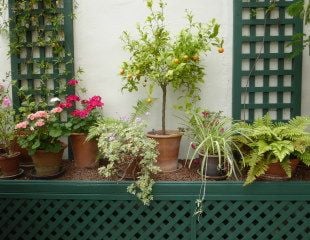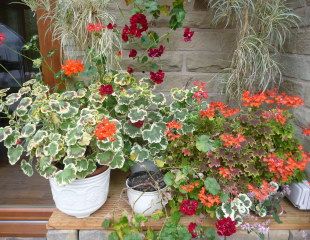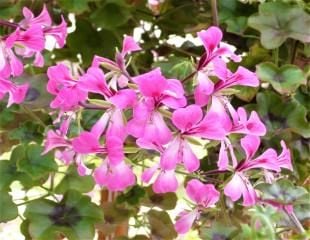
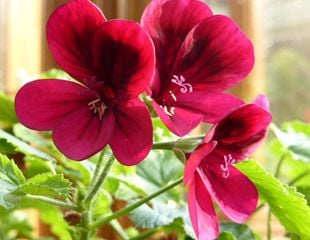
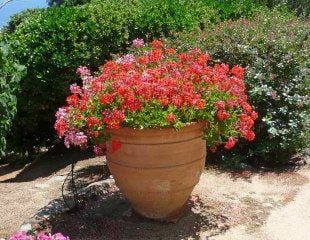
How to grow Pelargoniums also known Geraniums
Pelargoniums are non hardy garden plants often planted out as summer bedding. Commonly referred to as Geraniums, they are different to the Hardy Geranium. Pelargoniums mostly originate from South Africa, and ideal growing conditions are dry, hot and sunny.
There are 6 distinct types of Pelargonium. Angel, Ivy-leaved, Regal, Scented-leaved, Unique and Zonal. The Scented-leaved varieties are interesting as when the leaves are rubbed they emit a scent. There are many scents such as apple, cinnamon, citrus, lemon, lime, eucalyptus, ginger some with really pungent leaves. Ivy leaved Pelargoniums tend to trail, Zonal are upright with attractive leaf markings, Angel and Regal are also upright varieties.
All Pelargoniums flower best in a really sunny spot, and will tolerate dry conditions bordering on drought. Pelargoniums should not be planted out until all risk of frost has passed, which will be mid to late May, depending where in the country you garden.
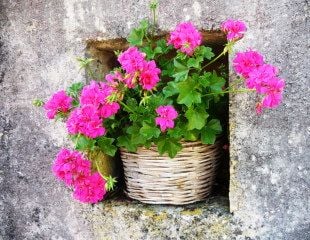
Pelargoniums are both stylish and easy to grow, drought tolerant and they do not produce the mass of dead heading required by some summer bedding plants. They are ideal summer bedding plants suitable for growing in a container or the border, as long as it is dry and sunny.
The best Pelargoniums are not cheap. To save money and have more study plants it a good idea to overwinter the plants.
Around Europe, we see large Pelargoniums trailing from balconies and in containers. By keeping the plants going year after year instead of throwing them away as bedding at the end of the summer, we can grow pelargoniums to a mature size in the UK.
I find Pelargoniums addictive and if you want to buy some really unusual, if not unique, Pelargoniums take a look at Fibrex nurseries.(not an affiliate link) Fabulous Pelargoniums and although initially expensive, you can (and I do every year) overwinter the plants. In the right conditions you can keep them going for several years, and it's easy to take cuttings to raise new plants.
How to Overwinter Pelargoniums
Pelargoniums are sensitive to frost, and cold weather and need to be overwintered in a frost free environment. The classification for Pelargoniums is H1, meaning they need to be kept above freezing at all times. Still, they are tough and will over winter with just a bit of shelter. Much depends on where you garden in the UK and how sheltered is your garden.
In most parts, Pelargoniums can survive the winter in an unheated greenhouse. In those parts of the UK where frost, freezing temperatures and snow occur, Pelargoniums will need more protection. An unheated conservatory can provide this even through very cold spells. An unheated conservatory will tend to be warmer than an unheated greenhouse, because the conservatory is sealed and weather proofed.
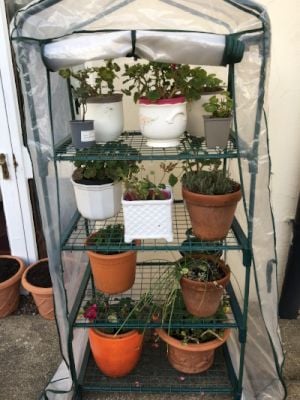
What if you do not have a greenhouse or conservatory?
Over the winter of 2022/3, I overwintered these Pelargoniums in this lean to and all but one survived.
This is a simple rack construction with a plastic cover. Placed in a sunny spot (as it was) you need to check it regularly and open up to let heat out and air in.
The real enemy when overwintering Pelargoniums is damp air which conditions will trigger mould. Wherever Pelargoniums are overwintered, minimal watering is key to their survival, keeping the plant on the dry side throughout the crucial winter months.
Before you set them up for the winter, trim off all brown or damaged leaves, trim back and take off the flowers. Clean the surface of the pots, removing all debris and fallen leaves from the summer. Get them into a hygienically clean state, and space out as much as you can. Ensure that the greenhouse/conservatory/lean-to is opened regularly. If the Pelargoniums succumb to any disease over the winter, it will be botrytis and that is best kept at bay by good air circulation. Video looking at overwintering Pelargoniums.
Pelargoniums are great Conservatory plants
It can be tricky growing plants in a conservatory because, potentially, conservatories can get very hot. An unheated conservatory will usually stay just above freezing, but in the summer, even with blinds, temperatures soar. This is more so if you go away on holiday or even out for the day leaving it closed up. When you come back, it is like walking into an oven.
Some conservatories have blinds, cooling fans, vents, and technology to try to cool the space, but the truth is many conservatories get hot. Pelargoniums are the one plant which consistently thrives in these extremes of temperature.
With the right watering and feeding regime, Pelargoniums will do well in a conservatory providing colour all year round.
During the summer, water Pelargoniums regularly and if very hot, every few days and feed once per week. Tomato feed is ideal. As temperatures fall off towards winter, stop feeding and reduce watering, keeping the plants on the dry side.
